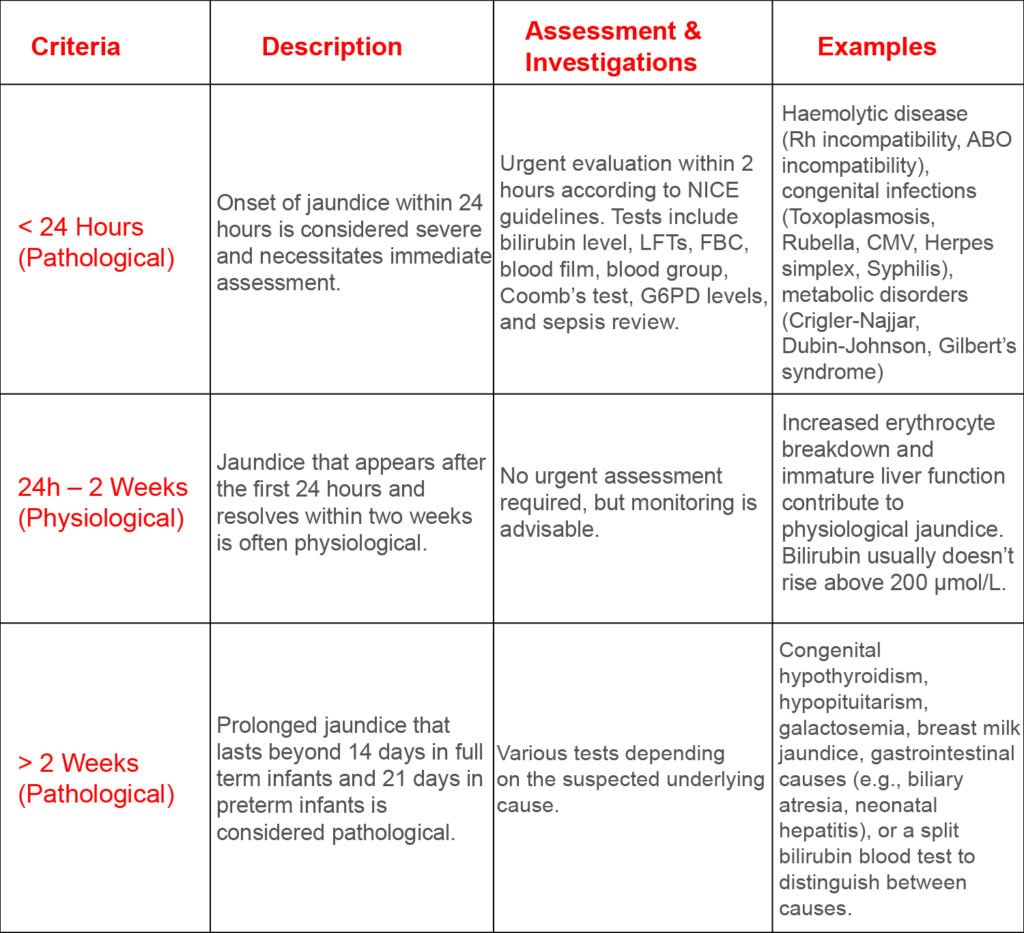
Causes of Prolonged Jaundice (Lasting More Than 14 Days)
Biliary Atresia (A Form of Obstructive Jaundice): This condition is often indicated by pale stools, dark urine, enlarged liver (hepatomegaly), and a failure to thrive or gain weight. Elevated levels of conjugated, also known as “direct,” bilirubin are usually present.
Congenital Hypothyroidism: Infants with this condition may exhibit jaundice, constipation, cool mottled skin, low activity levels, weak muscle tone, failure to thrive, a protruding tongue, a flattened nose, and eyes that are spaced widely apart. Oral Levothyroxine is usually administered until the child is 2 years old for treatment.
Breast Milk Jaundice: Usually, the infant appears healthy but has high levels of unconjugated bilirubin. This form of jaundice often resolves on its own within six weeks.
Galactosemia: Infants with this condition may experience vomiting, difficulty feeding, diarrhoea, jaundice, and failure to thrive. Early diagnosis and treatment are vital to prevent severe complications.
Urinary Tract Infection (UTI): Infants may show symptoms of jaundice and failure to thrive. UTIs are sometimes an underlying cause of prolonged jaundice.
Congenital Infections: Conditions such as CMV and toxoplasmosis may present with jaundice and failure to thrive. Early diagnosis and treatment are essential.
Further Reading: Neonatal Jaundice
You cannot copy content of this page